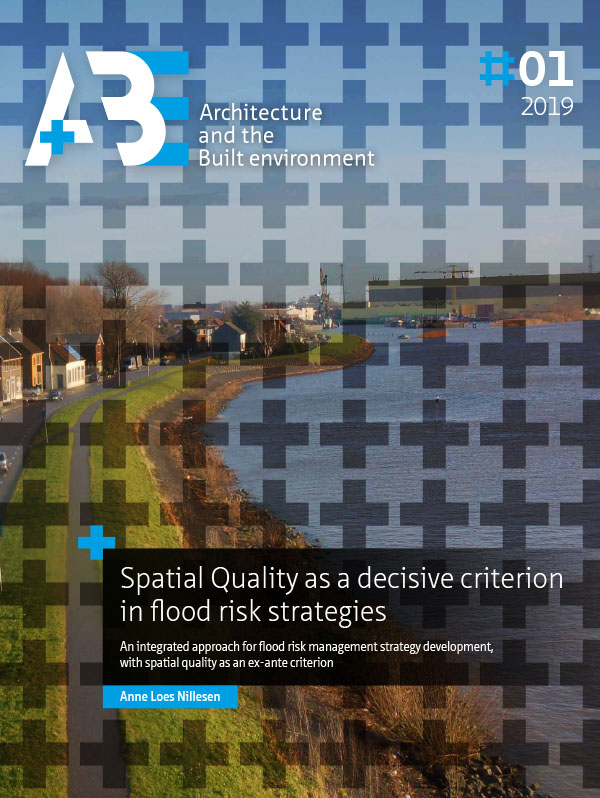Integrated Design for Flood Risk and Spatial Quality Enhancement
Examples from the Dutch Delta Programme
DOI:
https://doi.org/10.7480/abe.2019.1.3744Abstract
The assessment of the impact of a potential flood risk intervention on spatial quality at the local scale is an essential element in the research-by-design methodology developed in this thesis (and demonstrated in the previous chapters). Examples of how to explore this impact of the potential flood risk intervention on spatial quality at the local scale are shown in Chapters 5 and 6. In these research-by-design studies, applied to the Rijnmond and Alblasserwaard-Vijfheerenlanden case study areas, a conceptual representation of several business-as-usual flood risk management interventions is spatially projected on to a cross section of the location. It is mentioned in these chapters that design optimisation can mitigate the potential negative effect of a flood risk intervention on the local scale spatial quality (and thereby influence the assessment). In Chapter 6, some basic examples are shown, however, this topic is not elaborated further. The Scheveningen case described in Chapter 4 elaborately shows a design study in which three different flood risk management interventions are optimally embedded spatially. This study also shows an elaborate analysis of the spatial characteristics, challenges, and ambitions of the area. However, this approach is too elaborate and time consuming to apply as part the research-by-design method in which the impact on the local scale spatial quality of a wide range of potential flood risk management interventions is tested. This last publication shows an overview of some research-by-design studies, performed during this PhD research, that apply different approaches to test the impact of potential flood risk interventions on the local scale spatial quality. They vary from elaborate embedment studies (Scheveningen) to a more condensed research-by-design approach that could be included in the developed method (Sliedrecht & Houston). In the design studies, the following method is applied to a greater or lesser extent:
- Creation of an inventory of the spatial-economic ambitions and challenges of the location
- Creation of an overview of possible (and viable) technical options for dike reinforcements
- Performing a design study for the spatial implementation of each intervention
- Reflecting on the pros and cons of the applications
The spatial ambition map developed for the Alblasserwaard-Vijfheerenlanden case study, which is included in this chapter, is a valuable example of how to inventory the spatial-economic ambitions and challenges of the location.

